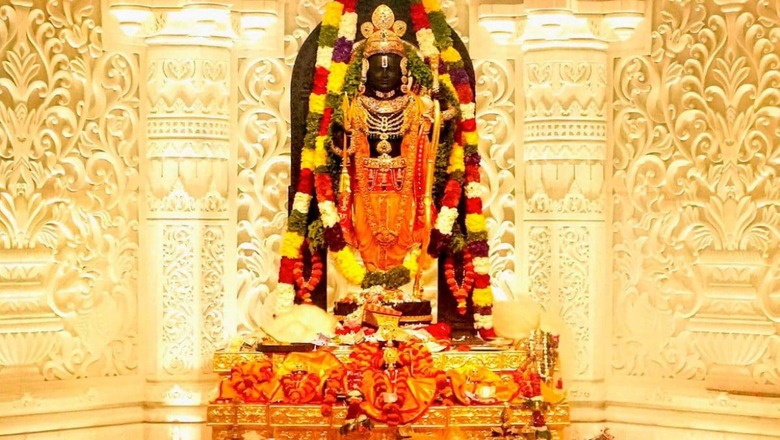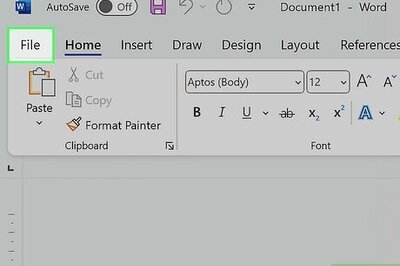
views
There has been a map floating around on social media since last week. It gives the number of towns in India that start with the name Rama. The total is 1230, much higher than I would have guessed. Census 2021 has been postponed. Census 2011 tells us there are 7935 towns/cities in India. While it is true that not everything on social media can be blindly trusted, 1230 out of 7935 is a large percentage and this is without including the ones that might have Raghunatha or Sitanatha instead of Rama.
Every town in India that starts with the name of (Shri) Ram pic.twitter.com/6nIKrDzreW— India in Pixels by Ashris (@indiainpixels) January 23, 2024
The geographical spread covers every state, barring Arunachal Pradesh, Manipur and Nagaland. But one must be careful. The listing is of towns that start with Rama. It doesn’t include a place like Jairampur in the Changlang district of Arunachal. Similarly, there is Serampore (Srirampur) in West Bengal. The notion of Rama being alien to West Bengal does some violence to facts. In the listing on the map, there are several from West Bengal. Among the more familiar towns in West Bengal associated with the name of Rama, are Ramrajatala and Rampurhat. Ramrajatala is on the Howrah-Kharagpur railway line and is so named because of a famous Rama puja (initially started by a zamindar) that has gone on for more than three hundred years. Apart from other things, Rampurhat is famous because it is close to the temple in Tarapith.
Using place names to make a point about Rama being relatively unimportant in West Bengal will not work. Nor will it work with proper names. Bengali parents give their children fancy names, probably much more than anywhere else in India. There is of course a difference between urban and rural Bengal, and between Kolkata and the rest of Bengal, with Kolkata entirely a post-British phenomenon. To drive home the point, when asked about Bengali culture, every Bengali will highlight stuff associated with Kolkata, not other parts of Bengal. This has to do with the historical emergence of Kolkata as the dominant centre, with no other urban habitation even a close second.
Anyway, this bit about fancy names is primarily a Kolkata phenomenon. When I was an undergraduate student in Kolkata, two brothers and a sister studied in the same college, a few years ahead and a few years behind. The surname was Sen. The two brothers were named Kapidhvaja Kapatavaksha and Makaradhvaja Marakatavaksha. Kapidhvaja is one with a kapi (monkey) on the banner. Thus, it is Arjuna’s name. Kapatavaksha means someone whose chest is as wide as a door. Makaradhvaja is one with a makara on the banner. Thus, it is Madana’s name. (In some stories about Hanuman, his son’s name was Makaradhvaja.) Marakatavaksha means someone whose chest is studded with emeralds. If the brothers were not bad enough, the sister was named Sandhya Rater Ekti Tara, which translates as – a star in the evening sky. Such parents obviously believe offspring will do nothing to distinguish themselves in life. The differentiation must come about through names.
But such fancy and bizarre names are also a relatively recent phenomenon, the last five decades or so. If one goes back, there were several famous people with Rama in their names. Shri Ramakrishna is probably the first one to occur and his brothers were Ramkumara and Rameshvara. The evil landlord who ousted them of their ancestral property was Ramananda. There was Raja Ram Mohan Roy, whose father was Ramkanta and the bhakti poet, Ramprasad Sen. Ramchandra Tarkalankar was a famous expounder of Nyaya Darshana. Much later, there was the famous sculptor, Ramkinkar Baij. There is no end to examples. There is a remarkable case of the village named Paschim (West) Sanaband in Bankura district, with a population of 1200 in 2011. Every male child in that village is so named that the name is prefixed or suffixed with Rama and the practice has been going on for some 500 years. To deduce anything from the modernisation of names would be fallacious.
Nonetheless, there is something that puzzles me. In Sanskrit, nouns decline in various ways, depending on the gender, the number (singular, dual, plural) and the akshara the word ends with. The declension reflects vibhakti, the case. The first grammar table any student of Sanskrit learns is masculine gender (pumlinga), with the word ending with “a”. Years later, when a person has forgotten everything else about the Sanskrit learnt in school, he/she will still remember the nominative case (prathama vibhakti) declension, the first row in the table. It runs Raamah, Raamou, Raamaah. As far as I know, this is true everywhere in India and there is a beautiful composition (attributed to the sage Budha Koushika) to remember the entire declension table. “Ramo Rajamanih Sada Vijayate” and so on. “Rama, the jewel among kings, is always victorious.” I am puzzled because every Sanskrit textbook written in Bengali seems to have Nara (man) instead of Rama. A person who has studied Sanskrit in Bengal will recognise Narah Narou Naraah.
The answer probably is Ishwar Chandra Vidyasagar’s introduction to Sanskrit grammar, written in 1851. This forms the basis of school textbooks, not Panini. Is there any reason why Vidyasagar, in 1851, chose Nara instead of Rama? It is a question worth probing.
The author is the chairman of the Prime Minister’s Economic Council and a well-known Sanskrit scholar. Views expressed in the above piece are personal and solely that of the author. They do not necessarily reflect News18’s views.




















Comments
0 comment